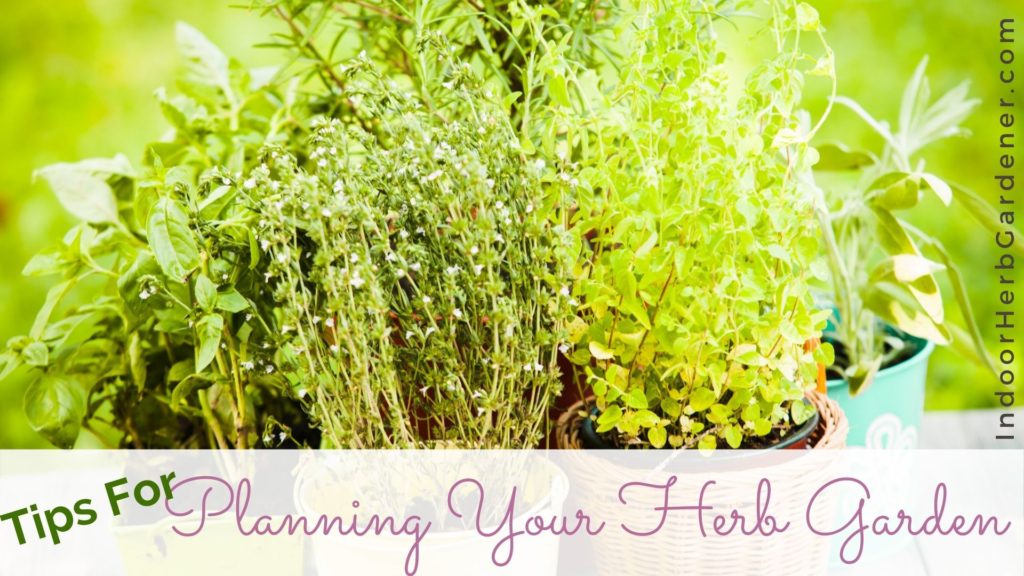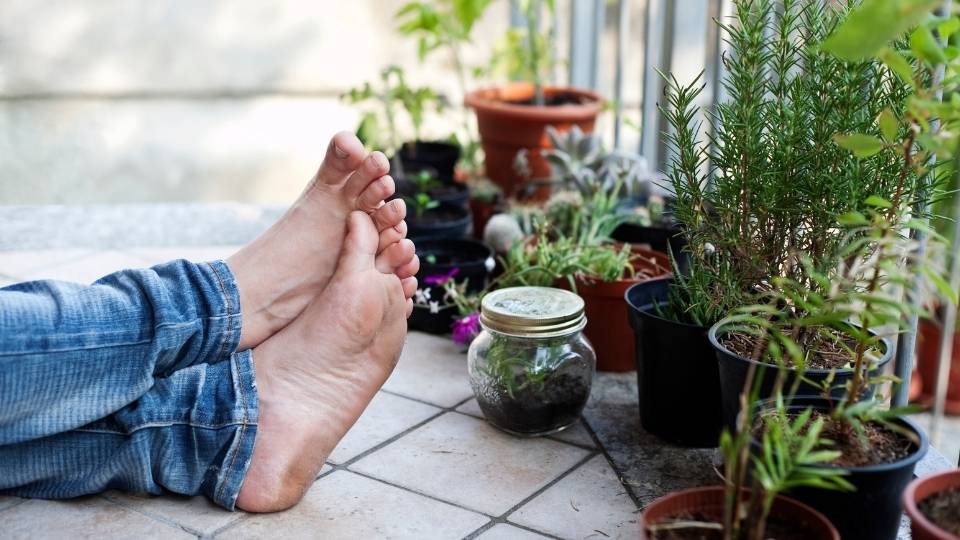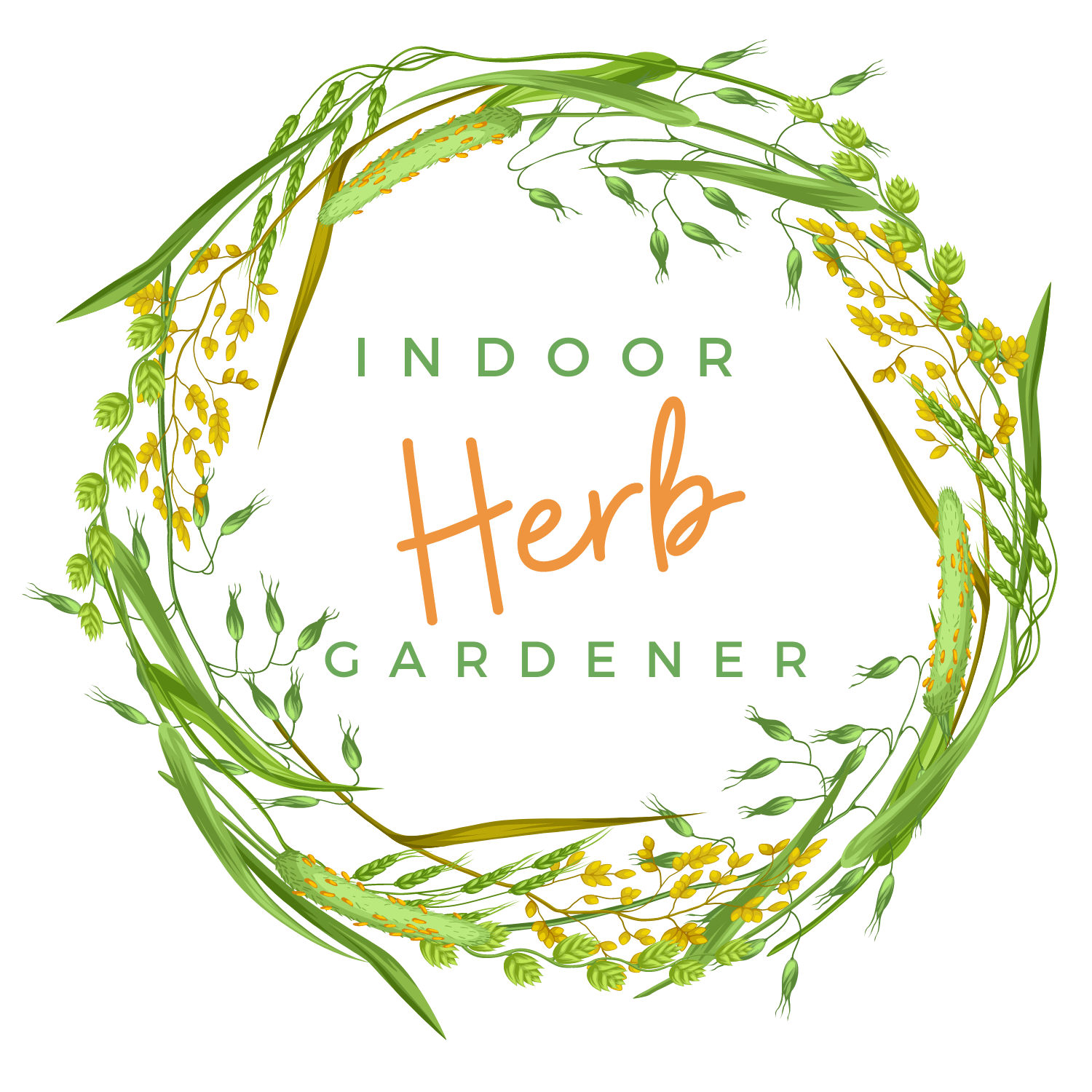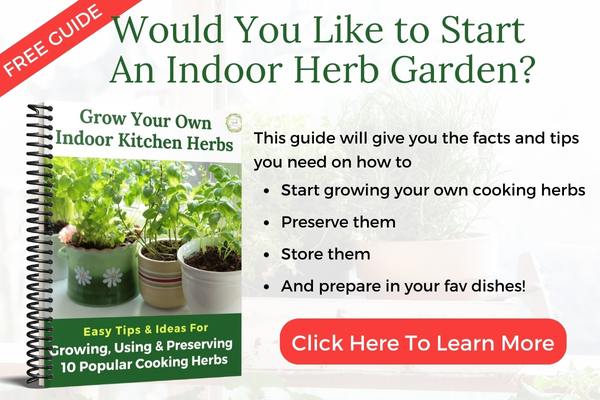Hey! By the way… IndoorHerbGardener is reader-supported. When you buy through links on our site, we may earn an affiliate commission and as an Amazon affiliate, we earn from qualifying purchases. Thanks in advance for your support!

If you’re anything like the average herb gardener, it can be mind-boggling looking through seed catalogs and trying to choose the plants you want. There are so many types of herbs out there that it’s tempting to plant almost all of them! But most of us don’t have the space to plant that many, or the time or energy to care for them all.
There are three basic types of herbs – herbaceous, evergreen, and annual. The type of herb will depend on how it grows, what type of plant it is, and its habits.
Herbaceous Herbs
Herbaceous herbs are perennial. They die back during the winter, but some back again in the spring.
Some common herbs of this type include oregano, tarragon, bee balm, mint, chives, sweet fennel, and winter savory. They don’t need to be pruned; you just clip them off at ground level at the end of the season. (If you grow these outside, they can even be mowed down with a mower.)
Always be careful with mint. It spreads quickly, so give it a nice big pot and let it do its thing.
Evergreen Herbs
Evergreen herbs are perennial herbs that require pruning if you don’t harvest them regularly.
They should be pruned every fall or early in the spring. Evergreen herbs include sage, rosemary, and thyme. When you prune, you should only clip those branches that are old and don’t show any signs of new growth. Any that are broken or lying on other branches should also be pruned.
When you harvest evergreen herbs, you should be careful to cut only one section of leaves at a time, and only cut it back to where new growth is still showing. You don’t want to cut too much, or you could discourage it from growing back.
Annual Herbs
Annual herbs include basil, cilantro, parsley, dill, and chervil (french parsley). They must be planted again every year, because they won’t come back after they die. If you want a continual harvest of annual herbs, you have to keep planting them every four to six weeks during the season.
You should try to snip off any flower buds you see on annual herb plants, because after a plant flowers, it usually won’t continue to produce leaves. After they flower, they go to seed, at which point they’re not really useful for producing leaves for your kitchen anymore.
When planning which types of herbs you want to grow (especially indoors), start by choosing only those varieties which you believe you’ll actually use. It’s tempting to plant every herb you discover but given the learning curve required to grow herbs indoors, start with a few core herbs then once you’ve mastered the art of growing those, expand to others.
And keep in mind how your herbs are used. For example, sage is an herb that many people prefer the flavor of when dried whereas I think fresh rosemary is far superior in taste to dried. Some medicinal herbs such as Blue Verbain are incredibly bitter so you generally would only use it in a tincture.
At the beginning, it might be better to just purchase those herbs which you already know you like to use fresh, as well as perhaps one or two you’ve never tried before just to test out.
Although herbs don’t generally require a lot of care and maintenance, they will need a bit of work. Don’t plant twenty different varieties if you realistically only have time to care for five!
Finally, be sure to check the growing requirements of those herbs and make sure you can supply those needs. For example, most herbs need 6-8 hours of bright sunlight. Do you have a south facing window that gets a ton of light all day? Then you may be okay. If not, can you invest in some grow lights to ensure successful harvests?

Here are some fun herb combinations for you to think about.
Culinary Herb Garden
- Greek Basil
- Rosemary
- Chives
- Sweet Basil
- Flat Leaf Parsley
- Curled Parsley
- Thyme
- Sweet Mint
- Oregano
Tea Garden
- Sweet Mint
- Bee Balm
- Peppermint
- Lemon Balm
- Viola
- Lavender
- Stevia
- Spearmint

